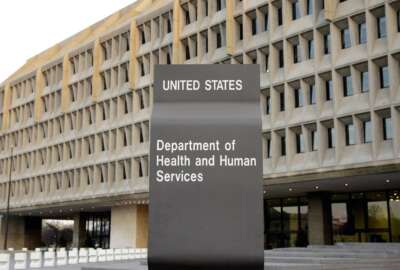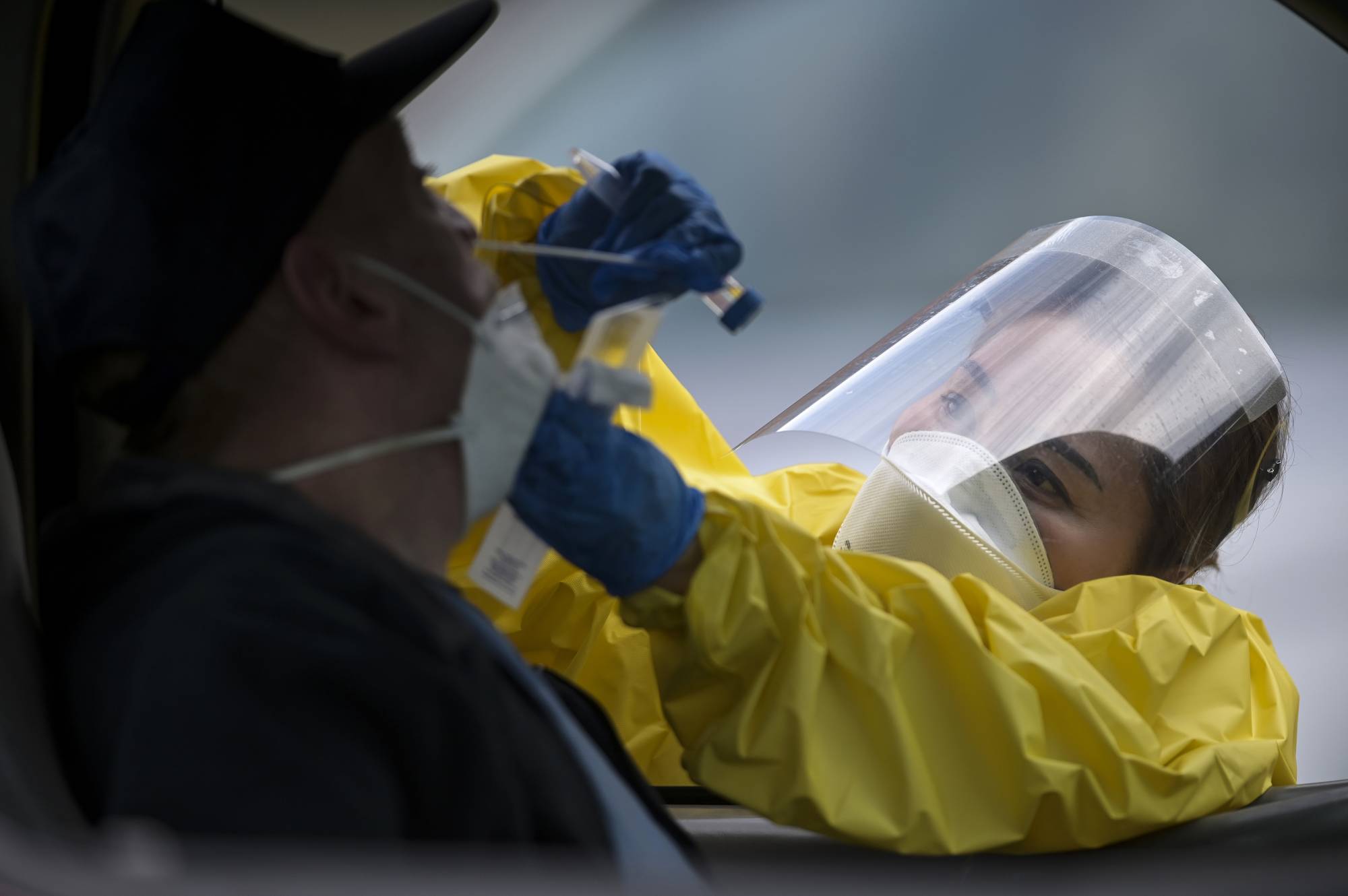

Given everything that happened in the pandemic of 2020, one would think the government would have learned a thing or two about bio responses. It has learned a lot,...
Given everything that happened in the pandemic of 2020, one would think the government would have learned a thing or two about bio responses. It has learned a lot, actually. But there is more work to do, according to the Government Accountability Office (GAO). For more, the Federal Drive with Tom Temin talked with Chris Currie, GAO’s director of Homeland Security and Justice.
Interview transcript:
Tom Temin And this latest report on bio response. Is it more a review of how the government did in plans that date back to 2018? In some extent, there’s plans that go back to the George W. Bush administration for bio response, or are there new learnings and things that they can do fresh recommendations? Tell us what’s going on here.
Chris Currie Well, what we wanted to do in this report is so much has happened leading up to COVID and, of course, during COVID. And so we wanted to issue something talking about our biodefense work over the last decade or so and some of the key challenges. And I think one of the big concerns we have is that there has not been really a comprehensive after action done post-COVID, which is understandable, I think everyone’s kind of ready to move on from COVID and get on to the next thing. But there were huge problems before COVID. COVID then, illustrated a lot of systemic weaknesses in our system for preparing and responding to these types of events. And then, it’s really important that we just try to follow up on these gaps and close them before the next pandemic happens.
Tom Temin Because I know the GAO has an eight-step program, for want of a better word, on how you actually do lessons learned. Everybody talks about lessons learned, but you’ve got an eight-step process for that. Sounds like that’s what you’re prescribing for the government.
Chris Currie Absolutely. The great thing about real events like this happening is you can learn lessons from them and prepare the next time. Unfortunately, that’s really hard to do. We’ve seen this in past disasters where there’s comprehensive after action review and reporting done, which requires a lot of time and resources. And often the gaps are not closed because, again, it’s sort of human nature to move on to the next event, not close the prior gaps. So that’s what we’re really advocating, needs to be done.
Tom Temin In some ways, maybe a lesson learned is post-9/11, which was the other catastrophic event, you might say, of this century, barely into the century. And there were commissions and studies and books and so forth. But you could say the government changed a heck of a lot, in the national way of thinking about terror attacks and mass destruction attacks did change. This was slow rolling, and yet it killed a million people and not just a few thousand. Not just, but you know what I’m saying, that maybe that’s a good model. 9/11 response for the COVID response, would you say?
Chris Currie I think that’s a good comparison. Very different events, but with 9/11, there was a lot of follow through with the 9/11 Commission and 9/11 Commission Act, the legislation that reformed how the government prepares and does intelligence gathering and things like that. That’s a good comparison, because I think that’s what’s needed in this case. For example, federal roles and responsibilities were a confusing part of the COVID response, especially up front. Who was responsible? Was it [Center for Disease Control and Prevention (CDC)]? Was it [Department of Health and Human Services (HHS)]? Was it FEMA? Eventually, they developed over a number of months a strategy and a structure to best respond to it. But that took some time to figure out, based on how COVID was actually playing out across the country. But if you look at today, we haven’t really gone back and reevaluated those roles and responsibilities and made any systemic changes to our system, in response and to prepare for the next event.
Tom Temin Do you think that one of the problems of the post facto era is that this took place, the pandemic over two administrations, that frankly hate each other’s guts. And without asking you to take sides, I wouldn’t do that. But could that be part of the paralysis here for stepping up to looking at this in a commission objective kind of way?
Chris Currie We’re all aware of the very politically contentious discussions around certain things that happened during the pandemic, like mask wearing and lockdowns and things like that. I do think that complicates in the ability to look at this holistically and see how we need to change our planning for the future. But I will say that across administrations, for example, in 2018, the Trump administration had issued the National Biodefense Strategy. The Biden administration, just recently in October 2022, issued a new strategy and a new update. There’s some differences between those, but in terms of how the federal agencies need to work together across the administration, the executive branch, to prepare, there’s a lot of similarities. For example, under the old strategy, HHS, in working with [Department of Defense (DoD)] and [Department of Homeland Security (DHS)] and USDA, was supposed to be the lead in coordinating across those departments to figure out what resources were needed for biodefense, where efforts needed to be placed. A lot of that is the same today. It’s the same agencies that have to work together to prepare for these types of things. I think one of the challenges has been accountability, though. Any time department agencies have to work together on something big like this, it’s very hard for them to make each other do certain things or spend money in certain ways. And that’s why leadership at a higher level is necessary, whether that comes from [Office of Management and Budget (OMB)] or the White House. And the Biden administration reinstituted the pandemic planning office within the National Security Council, that’s a good step to oversee some of these efforts. But in many ways, some of the challenges still exist. Like, how do we determine where resources are needed across such a huge enterprise? That’s still a challenge that we face.
Tom Temin We’re speaking with Chris Currie, director of Homeland Security and Justice issues at the Government Accountability Office. And I’m thinking it’s probably likely that the people at the operational level, whether they’re in FEMA or in some unit of CDC or HHS, they probably know one another. These communities tend to get small when you get down to the operational level and know exactly what has to be done. The sclerosis really is at the political and leadership level.
Chris Currie Yeah, and I think it’s important. It’s true, at the agency level everyone knows each other and they work together. And especially during COVID, they’re very much aware of what processes need to be put in place and how this might play out again in another pandemic in the future. I think what’s important is over time, the structure, resources and authorities match that. So a good comparison, I like to use, is after Hurricane Katrina, when the federal response was not what we wanted it to be. So there was legislation, major changes in federal policy around how you respond and what authorities you have to respond to a disaster. And I think, this is the same type of thing that’s necessary now, post COVID is. What lessons have we learned? And then, what changes do we need to policy to prepare for the next event so we can handle it the way we want to?
Tom Temin And state and local governments, state and municipal government, county government. That’s got to be a big piece of any kind of response nationally.
Chris Currie It’s a huge piece. It’s a huge piece in disaster response. And that is well ironed out at this point between the federal government, state and locals. How that response is going to work in a natural disaster, how resources are going to be shared, how funding is going to be provided from the federal government, well ironed out and tested through real events and through exercises. And I think this is no different. COVID is a disaster in and of itself. Another pandemic or a bio event is very similar. So, for a long time we’ve questioned why there is not a similar sort of structure and authority structure like there is in the disaster world, in the pandemic or biological event planning world. And I think there should be.
Tom Temin Because you don’t want people thinking of it like those signs on highways. This is an emergency escape route. You see these faded signs on crowded highways and you realize even city streets, this is the escape route. In a real disaster, it would be absolutely jammed with traffic. You’d be sitting for 6 hours at the first traffic light. That’s what you want to avoid.
Chris Currie Yeah. And I think the hard part about pandemics and situations like this is, they don’t occur very frequently, or at least that’s the perception. So, my fear is that coming out of COVID, people see this as it’s a once in every 100 year kind of event. We don’t have to worry about this again, we can move on to other things. That type of thinking is concerning to me, because another thing could pop up and it could happen again in a couple of years.
Tom Temin So any new recommendations? And if so, who are they aimed at?
Chris Currie So no new recommendations in this product that we just issued last week. It’s really just a combination of all of our prior work and reiterating some of these things. I will say, 21 of our 29 recommendations we’ve made in this biodefense space are still open. And part of that’s, because of how big and sweeping they were and how difficult they are to implement. So we still think those are critical to implement moving forward, and there’s still a lot of work to do. So we’ll be holding the agencies accountable for that over the next few years.
Copyright © 2025 Federal News Network. All rights reserved. This website is not intended for users located within the European Economic Area.
Tom Temin is host of the Federal Drive and has been providing insight on federal technology and management issues for more than 30 years.
Follow @tteminWFED


